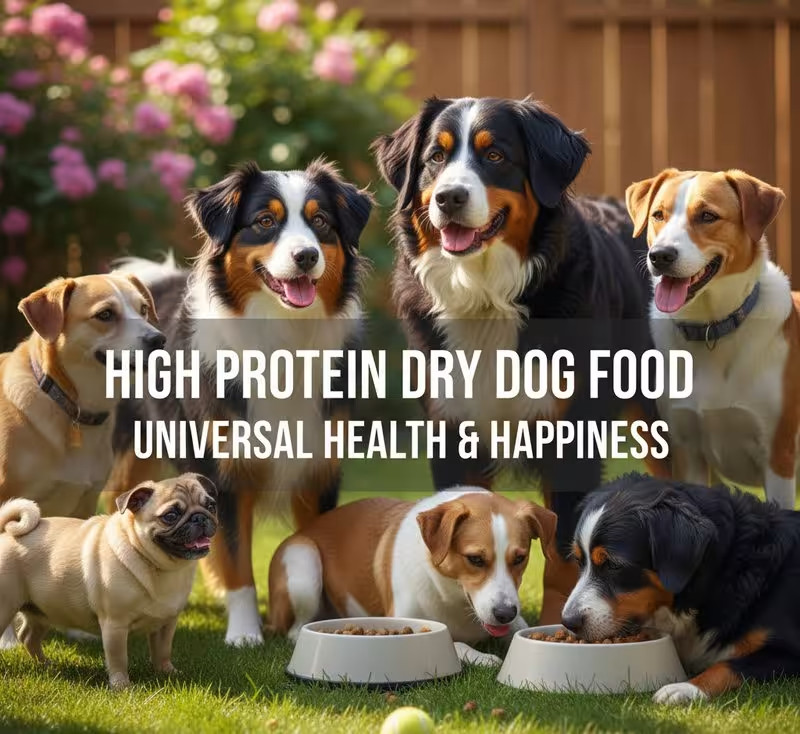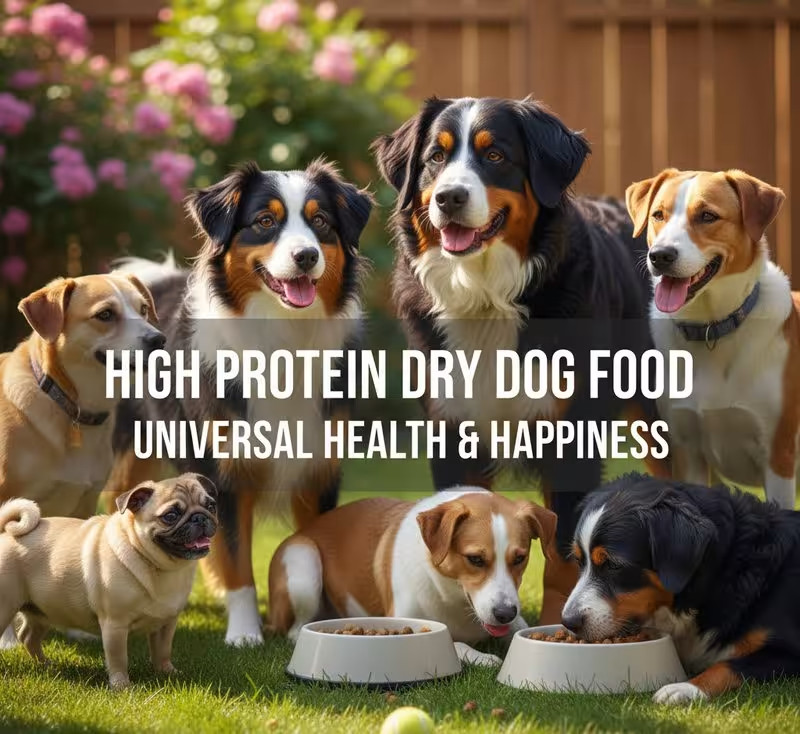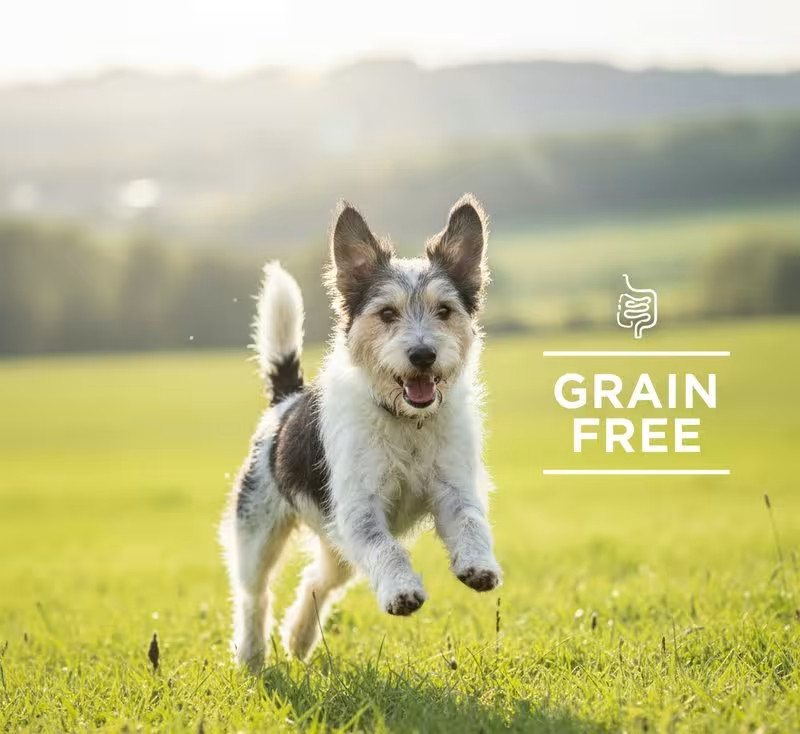The Ultimate Guide to Grain Free High Protein Dry Dog Food: Original Recipe Insights

As dog owners increasingly seek the best nutrition options for their furry friends, grain free high protein dry dog food has gained popularity. This comprehensive guide will delve into everything you need to know about this type of dog food, including its benefits, potential risks, and how it stacks up against traditional dog food.
Why Consider Grain Free High Protein Dry Dog Food?
Grain free high protein dry dog food is designed for dogs that may have sensitivities to grains or require higher protein levels for various health reasons. With the right ingredients, this food can provide essential nutrients while catering to specific dietary needs.
Understanding Grain Free Diets
Grain free diets eliminate common grains such as wheat, corn, and soy. Instead, they often rely on alternative carbohydrate sources like peas, lentils, and potatoes. This shift in ingredients can help some dogs avoid allergies and digestive issues.

Why Do Vets Not Recommend grain free dog food?
While grain free diets have their advocates, some veterinarians express concerns about them. Studies have shown a potential link between grain free diets and canine dilated cardiomyopathy (DCM), a serious heart condition. It is crucial to consult with your veterinarian before making significant dietary changes for your pet.
Potential Risks of Grain Free Dog Food
Before switching to grain free high protein dry dog food, consider the following:
- Nutritional Balance: Ensure that the food provides a complete and balanced diet.
- Ingredient Quality: Look for high-quality protein sources to avoid fillers.
- Health Monitoring: Regular check-ups with your vet to monitor your dog's health are essential.
Comparative Analysis: Grain Free vs. Traditional Dog Food
When comparing grain free high protein dry dog food to traditional dog food, there are several factors to consider:
Protein Sources
Grain free recipes often use meat as the primary protein source, which can be beneficial for muscle maintenance and energy. Traditional dog foods may also use meat but often include grains as fillers, which can dilute protein content.
Digestibility
Many dogs digest grain free foods more easily, especially if they have sensitivities. However, some dogs may thrive on a grain-inclusive diet due to the fiber content that aids digestion.
Price Point
Grain free high protein dry dog food can be more expensive than traditional options due to the quality of ingredients. Analyzing your budget and your dog's needs is essential before making a purchase.

Top Recommendations for Grain Free High Protein Dry Dog Food
Here are some highly rated grain free high protein dry dog foods:
- Wellness CORE Grain-Free Original Recipe: Offers a blend of high-quality proteins and wholesome ingredients.
- Blue Buffalo Wilderness: High protein formulas crafted with real meat and no grains.
- Merrick Grain-Free Texas Beef & Sweet Potato: Rich in protein and provides healthy fats for a shiny coat.
How to Choose the Right Grain Free Dog Food for Your Pet
Choosing the right grain free high protein dry dog food involves understanding your dog's specific dietary needs:
- Age & Activity Level: Puppies or active dogs may require higher protein levels.
- Health Conditions: Consult your vet for advice if your dog has specific health concerns.
- Taste Preferences: Dogs can be picky eaters; consider their preferences.
Conclusion
Grain free high protein dry dog food can be a nutritious choice for many dogs, particularly those with sensitivities to grains. However, it’s essential to consult with a veterinarian to ensure that your dog receives a balanced diet tailored to their individual needs. This guide has provided insights to help you navigate the decisions surrounding your dog's nutrition effectively.


 By
By
This is exactly the kind of in-depth, research-backed content I've been searching for! It’s so comprehensive and balanced, especially regarding the 'why vets don't recommend' section. Please keep producing these 'Ultimate Guides' – they're incredibly valuable for informed pet owners!
Thank you for engaging with this crucial guide on grain-free, high-protein dog food. As Dr. David Miller, I want to emphasize two critical takeaways: First, while these diets appeal to specific needs, **the potential link between grain-free formulations and serious conditions like Canine Dilated Cardiomyopathy (DCM) demands serious consideration.** Second, **ensuring comprehensive nutritional balance is paramount for your dog's long-term health.** Therefore, please prioritize consulting your veterinarian before making any significant dietary changes. Their personalized guidance is essential for your pet's well-being.
The guide mentions alternative carbohydrate sources like peas and lentils. Are there any specific 'original recipe' grain-free high protein brands that you'd recommend which truly focus on these ingredients, especially for dogs with sensitivities to potatoes?
Given the importance of nutritional balance, could you suggest a few top-tier grain-free high protein dry dog food brands that are consistently praised for their complete and balanced ingredient lists, perhaps ones that go above and beyond industry standards?
This article really stands out! It’s incredibly thorough and I particularly appreciate how it directly addresses the veterinarian concerns about DCM, providing a balanced perspective rather than just promoting grain-free. This level of detail builds a lot of trust.
It's great that this article directly tackles the DCM potential link. So many people just hear 'grain-free is bad' and don't understand the nuances or that it often relates to specific formulations, not the entire category. This helps clear up a big myth!
Besides peas, lentils, and potatoes, are there any other alternative carbohydrate sources that pet owners should specifically look for (or avoid) when choosing a grain-free high protein dry dog food to ensure optimal nutritional balance?
Before reading this, I was so confused about whether to go grain-free or not. My dog has mild skin allergies, and this article clarified that I need to look closely at the 'alternative carbohydrate sources' like peas and lentils, rather than just cutting grains. It's a journey, and this guide is an excellent roadmap.